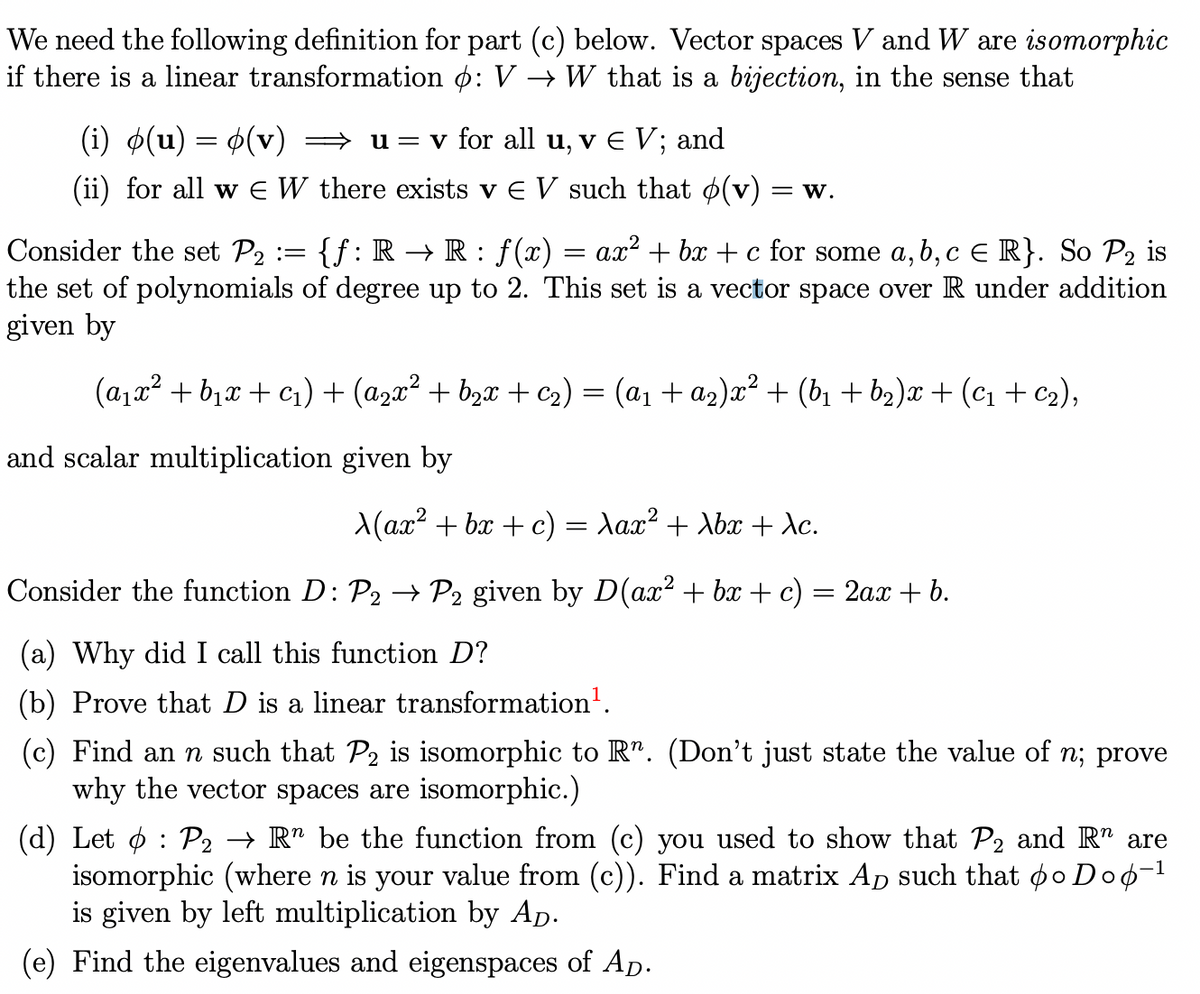(c) Find an n such that P2 is isomorphic to R". (Don't just state the value of n; prove why the vector spaces are isomorphic.)
(c) Find an n such that P2 is isomorphic to R". (Don't just state the value of n; prove why the vector spaces are isomorphic.)
Linear Algebra: A Modern Introduction
4th Edition
ISBN:9781285463247
Author:David Poole
Publisher:David Poole
Chapter6: Vector Spaces
Section6.4: Linear Transformations
Problem 34EQ
Related questions
Topic Video
Question
Please help me with part c

Transcribed Image Text:We need the following definition for part (c) below. Vector spaces V and W are isomorphic
if there is a linear transformation p: V → W that is a bijection, in the sense that
(i) ø(u) = $(v)
u = v for all u, v e V; and
(ii) for all w E W there exists v e V such that o(v)
= W.
Consider the set P2 := {f: R → R : f(x) = ax² + bx + c for some a, b, c E R}. So P2 is
the set of polynomials of degree up to 2. This set is a vector space over R under addition
given by
(a1x2 + b1x + c1) + (a2x² + b2x + c2) = (a1 + a2)x² + (b1 + b2)x + (c1 + c2),
and scalar multiplication given by
X(ax? + bx + c) = Aax² + Abx + dc.
Consider the function D: P2 –→ P2 given by D(ax² + bx + c) = 2ax + b.
(a) Why did I call this function D?
(b) Prove that D is a linear transformation'.
(c) Find an n such that P2 is isomorphic to R". (Don't just state the value of n; prove
why the vector spaces are isomorphic.)
(d) Let ø : P2 → R" be the function from (c) you used to show that P2 and R" are
isomorphic (where n is your value from (c)). Find a matrix Ap such that po Doo-1
is given by left multiplication by Ap.
(e) Find the eigenvalues and eigenspaces of Ap.
Expert Solution
This question has been solved!
Explore an expertly crafted, step-by-step solution for a thorough understanding of key concepts.
Step by step
Solved in 4 steps

Knowledge Booster
Learn more about
Need a deep-dive on the concept behind this application? Look no further. Learn more about this topic, advanced-math and related others by exploring similar questions and additional content below.Recommended textbooks for you

Linear Algebra: A Modern Introduction
Algebra
ISBN:
9781285463247
Author:
David Poole
Publisher:
Cengage Learning

Elementary Linear Algebra (MindTap Course List)
Algebra
ISBN:
9781305658004
Author:
Ron Larson
Publisher:
Cengage Learning

Linear Algebra: A Modern Introduction
Algebra
ISBN:
9781285463247
Author:
David Poole
Publisher:
Cengage Learning

Elementary Linear Algebra (MindTap Course List)
Algebra
ISBN:
9781305658004
Author:
Ron Larson
Publisher:
Cengage Learning